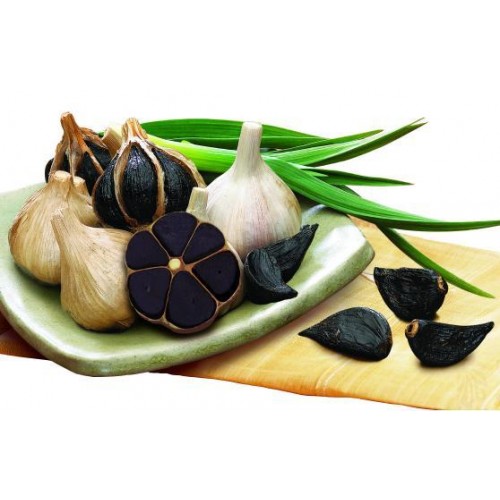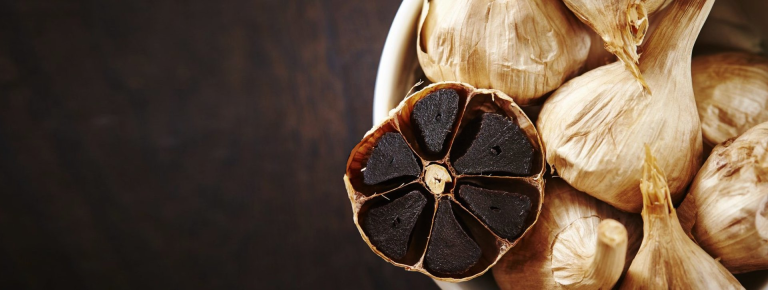At my harvest, nothing works without garlic (Allium Sativum) – the widespread tuber, which is actually an onion or leek plant, is used in our team on an inflationary basis because of its taste and its extensive powers. When you get a cold it is eaten raw before breakfast, it is almost never missing from lunch and some of us would like to smuggle it into dessert. No wonder we delved deeper into the world of garlic. We made an exciting discovery: “Black Garlic” is the name of our new favorite.
The variant, which is still rarely found on the vegetable shelf, is not a separate garlic genus, but “normal” garlic that has gone through a complex process of refinement. This refinement has properties that are praised in terms of appearance, taste and health and scores with understatement for sensitive noses.
Garlic: Health Benefits and a Small Catch

If for some it is indispensable in the kitchen, for others it is an absolute NO GO – the garlic divides minds.
The health properties of the spice plant are clearly convincing. The so-called toes of the plant from Asia have a proven antibacterial, blood pressure-lowering and blood-thinning effect and are used in many cultures around the world, e.g. B. by the ancient Egyptians or Romans, used as a medicinal plant for a long time. It is also said to have preventive and soothing properties for colon cancer.
While the smell of raw garlic is usually despised, fried or baked it can make you want more. However, when consumed, garlic can put the olfactory buds of the social environment to a severe test, which is why many people wave their hands at an important appointment or at a romantic dinner. Who would want to chase their opponent into the distance with acrid vapors or garlic flags?
The reason for the unpleasant smell: It is precisely the health-promoting, organic sulfur compounds that are produced by the starting material allicin that are responsible for the fact that garlic often leaves a “lasting impression”.
The “little black one” is always convincing
Knobi fans have reason to be happy thanks to the “black garlic”: After the conversion through the so-called “Maillard reaction”, the black bulb does not produce stubborn vapors or odors and shines in this area with restraint – rating: kissable.
The chemical reaction that occurs when the garlic is stored for four to six weeks under heat (55-65°C) is also beneficial for the other senses: the garlic shines elegantly in a dark robe and surprises with subtle, sweetish notes of liquorice and balsamic vinegar -, preserved plum, fig and caramel notes – a taste adventure for every palate. Sugars and amino acids are responsible for this, which produce yellow-brown to black nitrogenous compounds during the long fermentation process, similar to fried onions. Another plus point: According to scientific knowledge, black garlic has a higher antioxidant content than white garlic and is recommended for oxidative stress, such as during the menopause.
The purchase price, which at first glance is a bit high, is due to the complex finishing process, which is practiced worldwide above all by the Koreans and South Americans.
Already knew?

Some people experience digestive problems after eating regular garlic.
Steffi’s tip: Before processing, take out the strand in the middle of the toe if it is green and pronounced, this has proven to be helpful 😉
In order for it to develop its full health effect, the cell walls of conventional garlic have to be destroyed. It is advisable to “bump” or press and then take a ten-minute rest before processing. Incidentally, garlic does not like high and long heat.
As with almost all foods, most of the nutrients are ingested in their raw form – this is much easier to absorb with black garlic than with white garlic.

